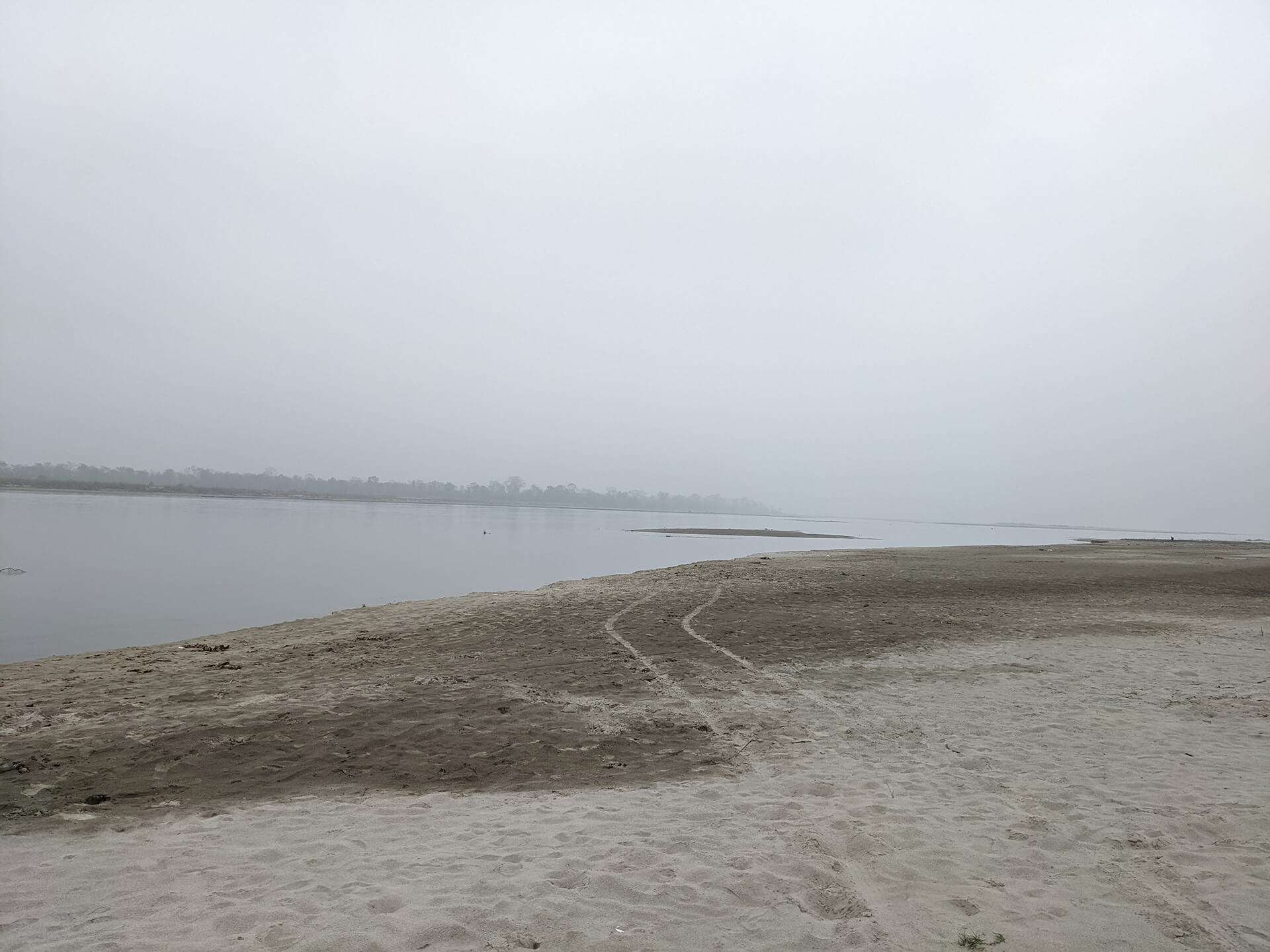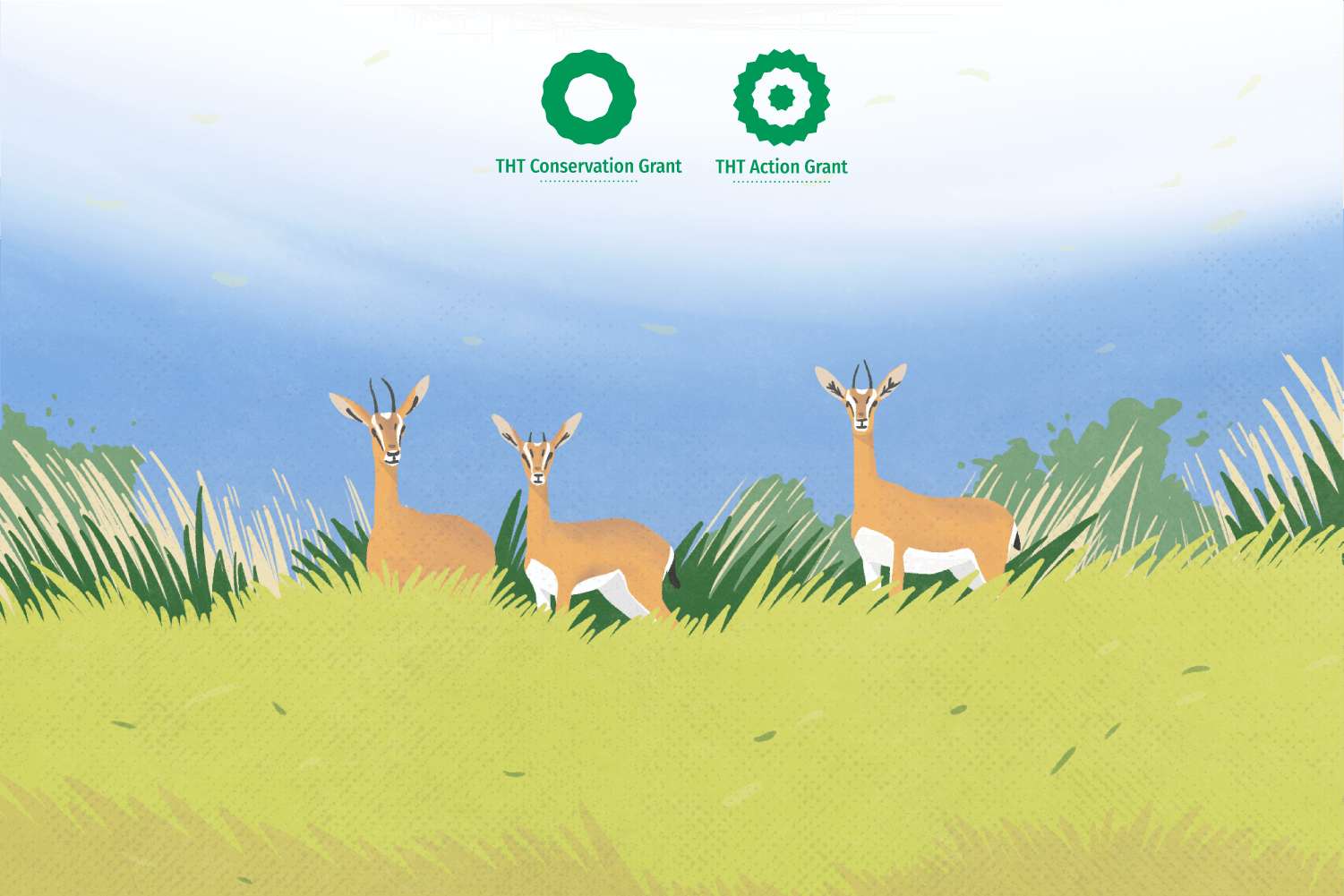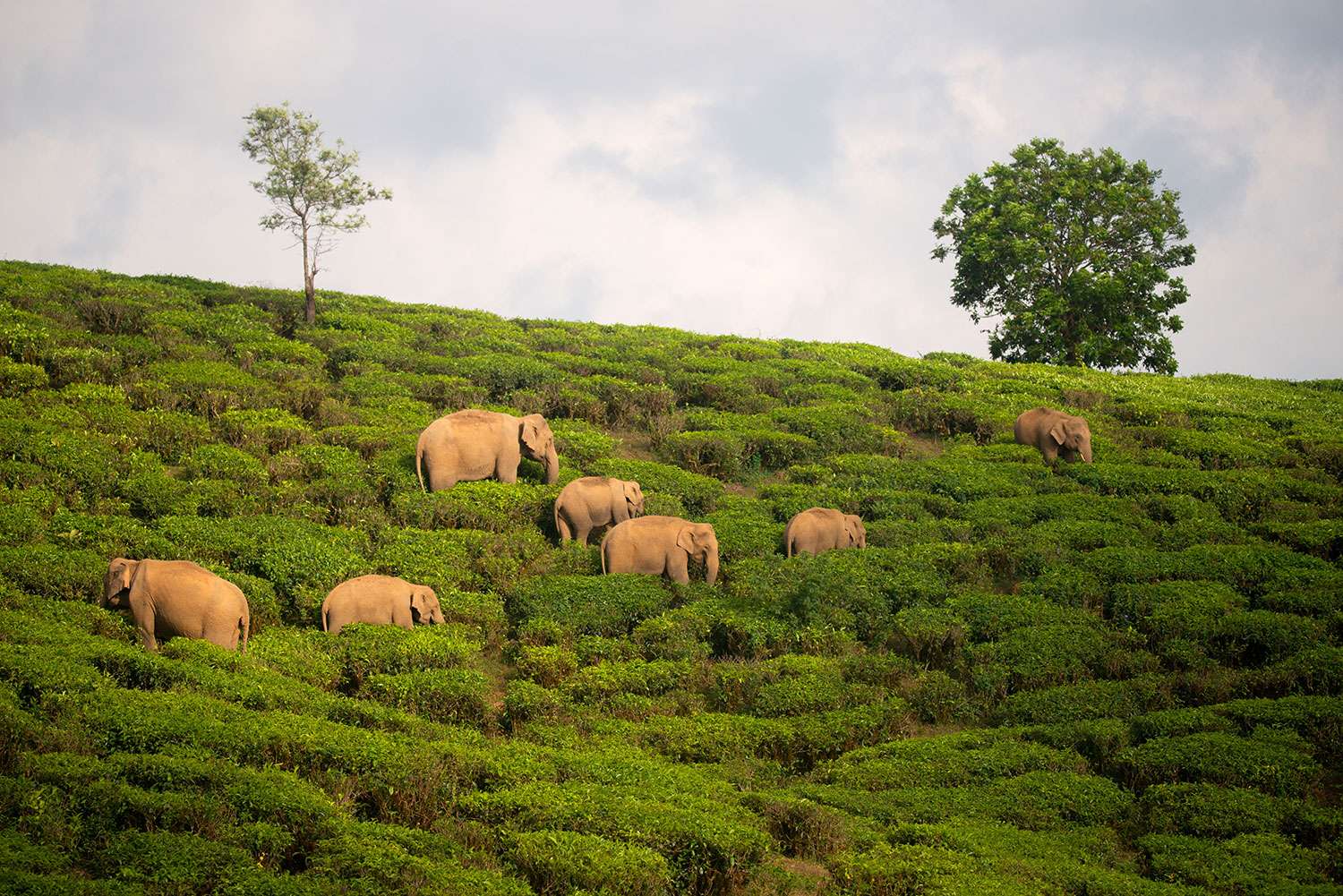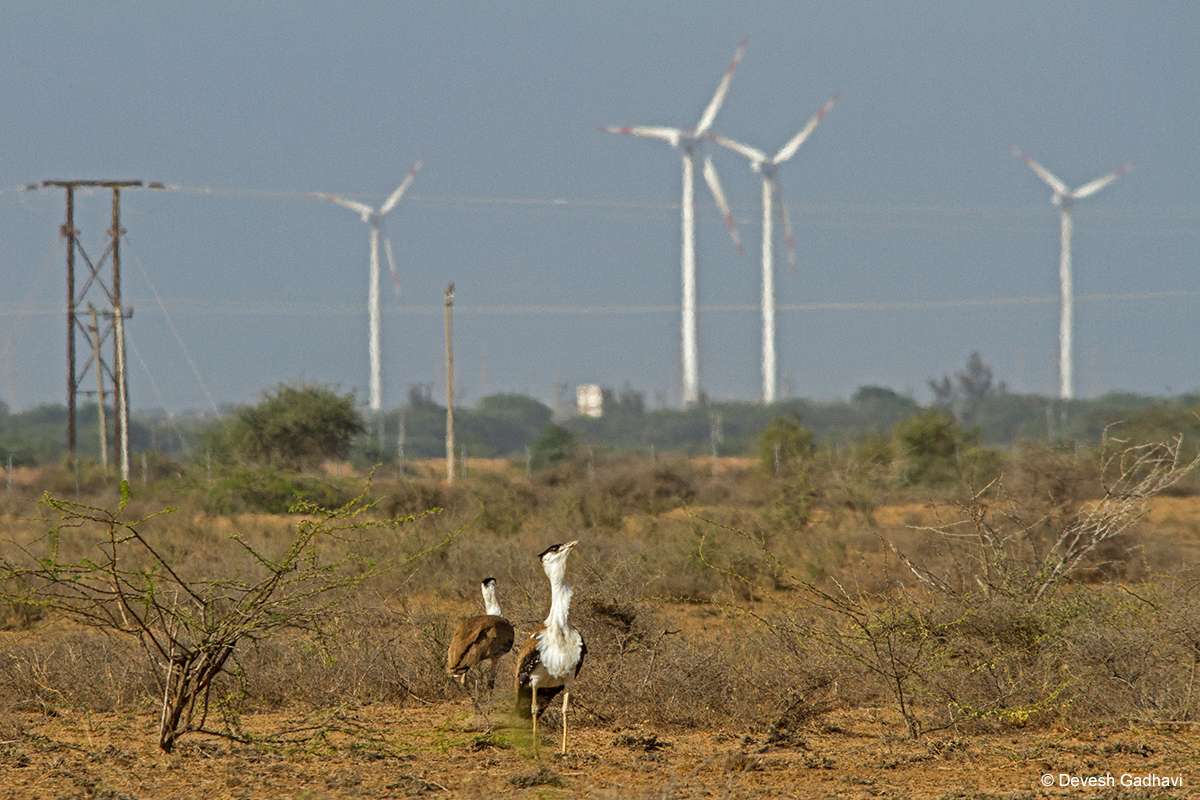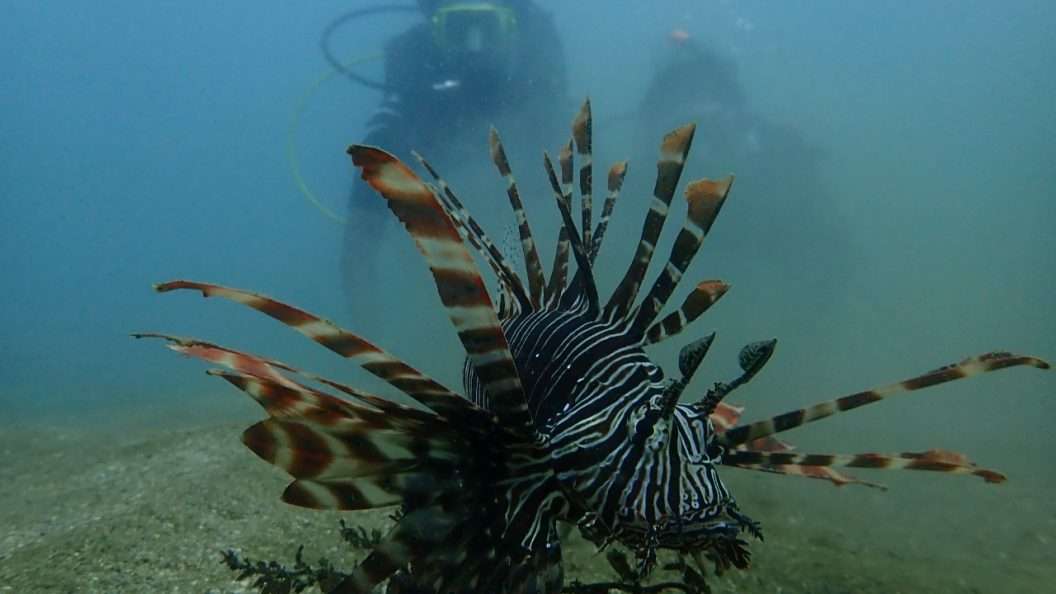Kaushik Sarkar
It was a chilly winter morning in Palia, Lakhimpur Kheri, approximately 13 km from Dudhwa Tiger Reserve. Despite the cold, my colleague and friend, Anup Bokkasa and I were to go birding. March is an interesting time for birding in this region as many migratory birds are on the last leg of their winter visit and those travelling back from far south are crossing this region. Having said that, the weather both outside and inside was melancholy. Anup had received news that his uncle had passed away. After some deliberation, we borrowed a bike from the hotel we were staying at, and left to see birds, which perhaps would prove a welcome distraction, not to mention the fresh air would do him a world of good.
We headed towards the grasslands around the banks of river Sharda. This is where a former batchmate Sankarshan, had spotted a Northern Lapwing recently. The Northern lapwing is one of the rarest migratory lapwings in India - a beautiful bird with a stylish crest and green back that appears glossy under the bright sun. It was an opportunity for a lifer (a birding term for when you see a bird for the first time) sighting, one we knew we would not get easily again.
The route was around 15 km long, even passing through a section of reserve forest, which we anticipated would be good for birding. But it was very chilly and the north Indian countryside is notorious for its fog and its freezing effect on a rider’s hands. We stopped once or twice to warm up, and spotted a pair of Indian Nuthatches, and a Himalayan Buzzard. An app was showing us directions, and before we reached the reserve forest, a few sharp turns revealed that what we believed would be a road, was barely a trail (about a metre wide).
We continued through this disturbed forest fragment, and were rewarded with familiar birds that we would otherwise expect in contiguous forests, like the Green-billed Malkoha and Oriental Pied Hornbill. This led to wonder if even predators would be around; we didn’t want to encounter a big cat or elephants on this narrow trail.
The trail broadened as we were about to exit the patch, and we asked a passing cyclist the route to the river. We entered a village with barbed wires around its sugarcane fields, some of which were being harvested while others stood tall. We carefully navigated the now-muddy path, riding around buffaloes and avoiding numerous ditches. All this while spending about 10 minutes trying to identify and photograph a pair of pipits (unfortunately, they remain recorded merely as pipit sp. on my eBird checklist).

Figure 1: Birds seen on the way; Himalayan Buzzard (left) and a Pipit species (right) (Paddyfield Pipit most likely). Photos by: Anup Prakash Bokkasa
The habitat turned grassier and scrubbier closer to the river bank. Finally, the path forked into multiple small trails. Around 300 m later, we finally reached the river bank. Sand and silt beneath our feet, and some casuarina-like saplings dominated this patch. I identified and assigned a young silk cotton tree as my land mark for our way back.
Finally, we looked upon what we’d worked so hard to reach. Here, in front of us was the wide Sharda. A dried-up braided river with a single narrow channel of water flowing through. The sand mounds on the river bed had short grasses growing on it in some places, while most of the channels remained muddy nullas. On the opposite bank was Kishanpur Wildlife Sanctuary, where its forest boundary was touching the river. Kishanpur Wildlife Sanctuary is also part of Dudhwa Tiger Reserve but holds much higher densities of mammals as compared to the Dudhwa National Park. One of the potential reasons is believed to be its proximity to this very river Sharda.
I started scanning the landscape for birds, as Anup spoke to his family and friends back home. Sometimes, field work is punctuated by life events – happy and otherwise – that happen without our presence, and we need to decide how best to approach it. We moved ahead and found a shallow water stretch with feeding water-birds. Small Pratincoles flew past us and a wild boar ran across the river. No Northern Lapwing yet, but lots of White, Yellow and Citrine Wagtails. Wagtails are a group of colourful birds that migrate to India every winter and occupy the grasslands and wetlands habitats across India.

Figure 2: Few waders in shallow waters (left) and a Small Pratincole (Right). Photos by: Anup Prakash Bokkasa
As we turned from the riverside, we saw something that trackers keep a keen eye out for in all forests: a fresh pugmark. Not a small one even, clearly a big cat, perhaps from the previous night or just a few hours ago, crisp on the sandy soil.
“Right here, some 300-400 m from the village in this scrubby habitat with plenty of cover, was a tiger on the move.”
We followed its tracks and saw smaller pugmarks, overlapping the tiger’s pugmark. We wondered if it was its cub, but since they were moving in the opposite direction, it could have been a Fishing cat or something else altogether. When the tracks disappeared in the grass, we backtracked and found the exact spot from where the tiger had climbed this river bank, with big depressions in the sand made from its weight. The cat had probably crossed the river from Kishanpur.

Figure 3: Tiger pugmark on the riverbank. Photo by: Kaushik Sarkar
The knowledge that a tiger was around was thrilling. Anup had some tips on what to do if we were to suddenly spot it (because it was likely it would have already spotted us). He told me to not to run or make any sudden movements but to maintain distance and keep a good eye on our flanks.
We traced our way back to the bike. It was time to go. Thrilled by the experience, we discussed how this scrub and sugarcane perhaps worked perfectly for the tigers, hence it was comfortable for them to move so close to the villages. Little wonder that this is the land of sugarcane tigers, where cubs are born, grow and thrive in these fields. For these tigers, sugarcane field is literally a habitat.
On the way back, we got into a bit of a balancing act on the narrow, muddy track, as a bullock cart approached from the other side. Both parties couldn’t possibly move past each other comfortably, so I dismounted while Anup walked the bike ahead. To give them more space, I leaned on the fence that enclosed the fields… and screamed!
The barbed wire I was leaning on was no ordinary barb wire; "it was an electric fence and I had been electrocuted!"
I rocked forward, with intense pain running down my back and knees; I believe my very nerves were in pain. And here is where a strange thing happened. While I was in agony, in that very moment of rocking forward in reaction of the shock, I spotted something on the other side of that path. A bird with a jet-black back and tail, almost the size of a robin was on a small tree, and something about its posture, tail and the monotone on its back appeared oddly familiar and yet not. My mind immediately switched gears from the pain to wonderment: could it in fact be the bird I was thinking it was! I heard Anup ask “are you okay?” and as a far cry from all the things he would have expected me to say, I replied, “Is that a Jerdon’s Bushchat?!”
Now, before you wonder if the shock had scrambled my brains, here is why this is important: Jerdon’s Bushchat is one of the rarest birds in India. It is only found in Dudhwa-Pilibhit Terai region of UP apart from North-east India and we had never seen it before. I hurriedly picked up my binoculars to take a good look, but the damn bird refused to show its face and, in a few seconds, it flew away as well. The whole episode of my getting electrocuted and asking Anup if this was indeed Jerdon’s Bushchat happened within five to six seconds. The lady on the bullock cart was laughing at the comical scene we undoubtedly made. Anup agreed that this bird was different from the usual suspects with a black back. Here I was standing literally “shocked!” as we were so close to an ‘electrifying’ find for the region. So far the Jerdon’s Bushchat was recorded only in the adjoining district of Pilibhit. It has never been recorded from Lakhimpur district where Dudhwa Tiger Reserve is.
If that bird had just turned towards us once, one glance at its throat and side would have sealed a special record, indeed. We wondered if we would get this opportunity again. That’s what our field work is: either it is a sighting of a lifetime or a blink and a miss. After a few minutes, we chose an alternate route and went back to our hotel and slept off the rest of the noon to recuperate from an ‘electrifying’ morning on all counts.
Additional information in boxes
Box 1: The presence of tigers in agricultural fields is a point of big debate in the terai regions of India. Tigers are even known to breed in the sugarcane fields, bringing them uncomfortably close to humans with instances of loss of life on either side.
Box 2: Electrical fencing is one of the most used techniques used by farmers to keep away animals from their agricultural field. Generally known as ‘solar fences’ they are supposed to just give a mild shock, good enough to keep animals away. Unfortunately, high maintenance and investment makes these fences difficult to opt by the farmers. The lack of maintenance like the use of general barb wire, the connection to main power line and unchecked active time, often pose risks to human and animal lives.


